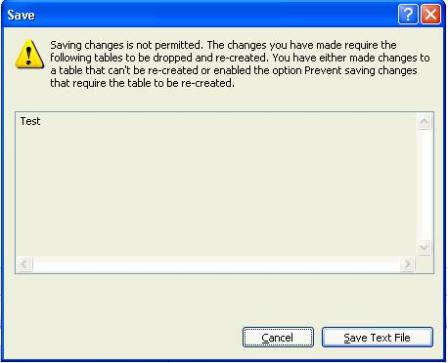Question: What is a Self Join?
Answer: A self-join is simply a normal SQL join that joins one table to itself. Joining a table to itself can be useful when you want to compare values in a column to other values in the same column.
Question: Is Self Join Inner Join or Outer Join?
Answer: A self-join can be an inner join or an outer join or even a cross join. A table is joined to itself based upon a column that have duplicate data in different rows.
Question: What is a practical use of the Self Join in the real world?
Answer: The best example of self join in the real world is when we have a table with Employee data and each row contains information about employee and his/her manager. You can use self join in this scenario and retrieve relevant information. Let us see an example, over here.
Let us first create the same table for an employee.
One of the columns in the same table contains the ID of the manger, who is also an employee for the same company. Now all the employees and their managers are present in the same table. Let us see how Self Join works in the real world scenario now.
|
1
2
3
4
5
6
7
8
9
10
11
12
13
14
15
16
17
18
19
20
21
22
23
24
25
26
27
|
USE TempDb
GO
CREATE TABLE Employee(
EmployeeID INT PRIMARY KEY,
Name NVARCHAR(50),
ManagerID INT
)
GO
INSERT INTO Employee
SELECT 1, 'Mike', 3
UNION ALL
SELECT 2, 'David', 3
UNION ALL
SELECT 3, 'Roger', NULL
UNION ALL
SELECT 4, 'Marry',2
UNION ALL
SELECT 5, 'Joseph',2
UNION ALL
SELECT 7, 'Ben',2
GO
SELECT *
FROM Employee
GO
|

Let us now connect the Employee table with itself with the help of INNER JOIN.
|
1
2
3
4
5
6
|
SELECT e1.Name EmployeeName, e2.name AS ManagerName
FROM Employee e1
INNER JOIN Employee e2
ON e1.ManagerID = e2.EmployeeID
GO
|

In the result set, we can see that all the employees who have a manager are visible. Though the above solution has one limitation. The limitation is that we are not able to find out the top manager of the company in our result set. Inner join does not display any result which does not have a manager id in our scenario.
Next let us convert Inner Join to Outer Join and then see the result set.
|
1
2
3
4
5
6
|
SELECT e1.Name EmployeeName, ISNULL(e2.name, 'Top Manager') AS ManagerName
FROM Employee e1
LEFT JOIN Employee e2
ON e1.ManagerID = e2.EmployeeID
GO
|

Now we have converted Inner Join to Outer Join for the same table and we can see Top Manager in resultset.
I hope it is clear from the example that SELF JOIN can be INNER JOIN or OUTER JOIN.










